The model presents an unapologetically polished front, with a clean glossy circumference, a discreet but noticeable logo, and multiple black shades creating an illusion of depth. The self-cooling fan will prevent overheating. The fan's also pretty much silent.
The non-slip pad is small.
People with Samsung smartphones and smartwatches will benefit from the Samsung EP-P3105TBEGGB the most. Other than supporting Fast Charge, recharging these gadgets as quickly as every wireless charger on this list, this model also shares an aesthetic with the latest Samsung gadgets, making them an elegant fit.
Qi-compatible devices, Fast Charge mode is compatible with some Samsung and Apple devices
5 V, 1 A (9 V, 1 A for Fast Charge mode)
Built-in LED indicator, USB Type-C interface, Scheduled fan control (self-cooling fan)
Charging plate with non-slip surface
96.5 x 96.5 x 20 mm
99 g
1 year
The foreign object detection feature will alert you with an amber LED light when there's a foreign object on the charger (keys, coins, you name 'em), preventing the model from melting or damaging the gadget you're looking to recharge.
The provided USB cable is pretty shoddy.
The Belkin F7U082 is smart, capable, and flexible. What's more, the model measures 90 x 90 x 13 millimetres, making its footprint even more compact than the model's most space-saving competition. In other words, the smallest bedside tables will easily accommodate this accessory.
Qi-compatible devices, Fast Charge mode is compatible with some Samsung and Apple devices
5 V, 1 A (9 V, 1 A for Fast Charge mode)
Built-In LED indicator, Micro USB interface, Overheating protection, Foreign object detection
Charging plate with non-slip surface
90 x 90 x 13 mm
74 g
3 years (registration required)
The charging stand lets you place the phone vertically or horizontally, so you can watch YouTube or video call without separating the phone and the stand. The non-slip coating on both chargers will prevent phones from falling off even whilst vibrating.
The flat charger is slower than the stand.
People who have and use more than one Qi-enabled device will not regret going with the CHOETECH JPP-68. That said, since you can leave one charger at home and one at the office, even those who don't own more than one device like that should also find this package to their liking.
Qi-compatible devices, Fast Charge mode is compatible with some Samsung and Apple devices
5 V, 1 A (9 V, 1 A for Fast Charge mode)
Built-in LED indicator, Micro USB interface, Overvoltage, Overcurrent, Short-circuit, Overheating protection, Foreign object detection
2 chargers included: charging stand and charging plate with non-slip surface
Pad: 91 x 91 x 10 mm
~50 g
Stand: 43 x 32 x 63 mm
~100 g
18 months
The charger can recharge phones through 6-millimetre thick cases. To go with overheating and overcurrent protection switches, this charging accessory also integrates overvoltage and short-circuit protection means as well as foreign object detection.
The LED indicator is too bright.
Customers with LG phones will appreciate this wireless charger from LETSCOM first and foremost. Outputting 15 watts, this model recharges them (from ~0 to 100%) within 90 minutes tops. Plus, its matte finish is not the scratch magnet that wireless chargers with glossy housings are.
Qi-compatible devices, Fast Charge mode is compatible with some LG, Samsung, and Apple devices
5 V, 1 A (9 V, 1.67 A for Fast Charge mode)
Built-In LED indicator, USB Type-C interface, Overvoltage, Overcurrent, Short-circuit, Overheating protection, Foreign object detection
Charging plate with non-slip surface
100 x 100 x 8.6 mm
~50 g
1 year (registration required)
The USB cable that comes with the package measures almost 1 metre, so you won't be as tied to the mains as you usually are with wireless chargers. The integrated LED circle will display the charging status.
The charger gets pretty hot when you go with the Fast Charge mode.
With the NANAMI Wireless Charger, you can wave goodbye to cable salad and defective charging cables. On the contrary, the pad will keep your setup clean and cord-free. Meanwhile, the multifunctional intelligent protect technology will make sure the charger does not damage the gadget it is charging.
Qi-compatible devices, Fast Charge mode is compatible with some Samsung and Apple devices
5 V, 1 A (9 V, 1 A for Fast Charge mode)
Built-in LED indicator, USB Type-C interface, Overvoltage, Overcurrent, Short-circuit, Overheating protection, Foreign object detection
Charging plate with non-slip surface
99 x 99 x 7.6 mm
~50 g
Amazon's 30-day return policy
This site is a free online resource that strives to offer helpful content and comparison features to its visitors. Please be advised that the operator of this site accepts advertising compensation from certain companies that appear on the site, and such compensation impacts the location and order in which the companies (and/or their products) are presented, and in some cases may also impact the scoring that is assigned to them. The scoring that appears on this site is determined by the site operator in its sole discretion, and should NOT be relied upon for accuracy purposes. In fact, Company/product listings on this page DO NOT imply endorsement by the site operator. Except as expressly set forth in our Terms of Use, all representations and warranties regarding the information presented on this page are disclaimed. The information which appears on this site is subject to change at any time. More info
Samsung (EP-P3105TBEGGB)
Scheduled Fan Control
The Samsung EP-P3105TBEGGB is an elegant solution, not unlike Samsung's more expensive gadgets. Needless to say, the pad looks quite brilliant, presenting an unapologetically polished front that, whilst sharing obvious similarities with more value-oriented wireless chargers, also looks pretty different from its budget peers. The circumference is clean, the company's logo is discreet yet noticeable, and the multiple black shades make its appearance uniform and multi-layered at the same time. As negligible as the difference between these chargers usually is, we can see where the elevated price tag is coming from here.
Of course, this is not just about aesthetics. We're not saying that they're not important, just not quite as much as the scheduled fan control feature, the model's biggest selling point. Employing a self-cooling fan, this charger starts running the fan the moment you place a device on it, preventing overheating. When you remove the recharged device, the fan stops whirling automatically. Despite its effectiveness, the fan is practically silent, so you can put the charger on the bedside table without worrying that its operation might disturb you.
The one thing that we're not crazy about here is the non-slip surface on the bottom. To be more specific, whilst more affordable wireless chargers usually add non-slip treatment to the entire bottom, this model comes equipped with a small non-slip pad, which is a more elegant approach, sure, but also a less convenient one. Because the pad's so small, a device with respectable heft can apply pressure to the edges, making the base slip or skid. But, as long as you don't straight-up drop the device, you should be fine.

Type-C Interface
Operation-wise, the charger works with Qi-compatible devices and accessories, delivering an output of 5 watts. With Samsung and Apple devices that support the Fast Charge mode, the model charges at up to 7.5 watts, Naturally, this is nothing new. What's also not new is the USB Type-C interface that this device comes equipped with, but we welcome the interface nonetheless since, between Type-C and Micro USB, we always pick the former over the latter. As always, the model also comes outfitted with an LED indicator that lets you know when it is powered up.
So, without further boring you with details that pertain to most wireless chargers, the Samsung EP-P3105TBEGGB is a little more elegant than its alternatives and a little more caring towards the device it is charging.

Additional Info
| Last updated price | £33.00 |
| Stock | In stock |
| ASIN | B07YN5B4RF |
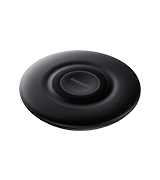
Belkin (F7U082)
Commanding a Small Footprint
Wireless chargers are accessories. They're not the accessories you purchase to accessorise something but they're accessories nonetheless. The Belkin F7U082 understands that. Aside from offering respectable tech, this is a convenient accessory first. Measuring just 90 x 90 x 13 millimetres, this model occupies almost no space. Bedside tables, small coffee tables, the smallest, busiest, most crowded surfaces/furniture pieces will have no troubles accommodating this compact accessory. Setting aside its space-saving profile, the model even weighs ~70 grammes, so you can toss this one into the bag and bring the charger with you to work and back home without even noticing its presence. Truth be told, considering its size, forget the bag - you can probably get away with a pocket.
From an appearance standpoint, this is not necessarily the most attractive accessory, not quite. The plastic feels sturdy and nice to the touch but the lines (meaning the circumference) is not quite seamless, so the model does not quite look as sleek as more expensive wireless chargers usually look. That being said, between black and white options, the white one appears pretty elegant. It is also easily soiled but that's always the case with white accessories, electronics, anything white, really.
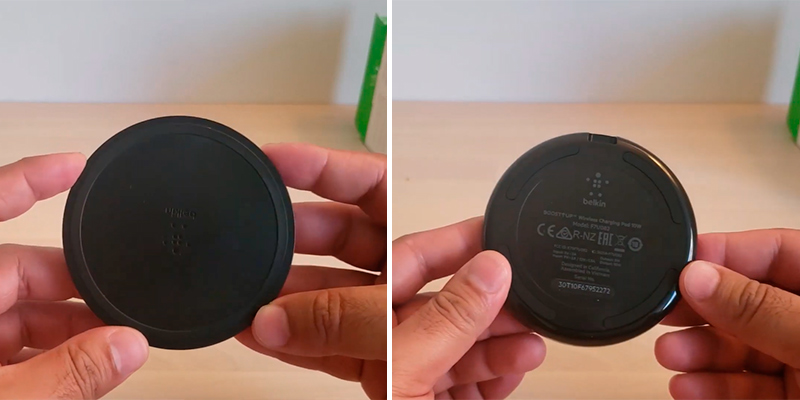
Compatible with Lightweight Cases
Reviewing the model's performance, we've no complaints, at least nothing especially significant. Drawing 10 watts, this device provides the fastest possible wireless charging speed to iPhone and Samsung gadgets, all while delivering the standard 5-watt charge to Qi-enabled devices from different brands. What's more, the model even works with the most lightweight plastic cases (>3 millimetres).
Foreign objects like keys and coins can disrupt the charge and even make wireless chargers waste unnecessary power that might melt or damage the gadget on it. With this model, you can charge without worrying about that. Using a white LED light, the Belkin F7U082 indicates that the connected gadget phone is aligned and is charging without hiccups, whereas a red light (more like amber) will alert you that there's a foreign object on it. Both lights are noticeable but not bright, so you won't find them distracting even flashing beside you on a bedside table.
Looking at the package, we're fine with everything except the USB cable. In short, it is pretty shoddy, not unlike everything else that comes with this product. Still, the Belkin F7U082 can tussle with the most expensive wireless chargers even with this shoddy cable.
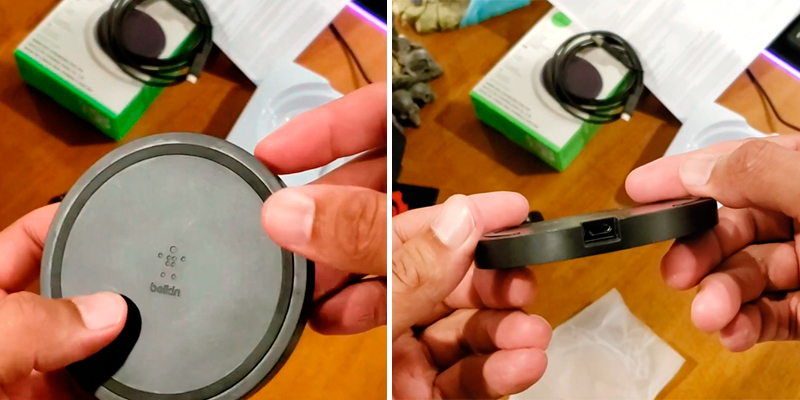
Additional Info
| Last updated price | £21.49 |
| Stock | In stock |
| ASIN | B07PYSX1YK |

CHOETECH JPP-68
Two Chargers Beat One
The CHOETECH JPP-68 is a different package. First things first, this is a two-item set that includes a wireless stand and a pad. Between the two, you can recharge two gadgets (tablets, phones, AirPods 2 or AirPods Pro case) at the same time. You can also leave one at the office and one on the bedside table. Not unlike most wireless chargers today, these two devices can charge through cases, as long as these cases are <5 millimetres thick (rubber, plastic, TPU, the chargers are fine with most case materials). And, as always, metals, magnets, and credit cards must be removed since they can interfere with the charging process.
But, before we discuss the process, let's see what the package looks like and what these chargers are about. To start with, we have the charging stand, measuring 43 x 32 x 63 millimetres and reaching ~100 grammes on the weight scales. The stand features non-slip coating, so you can place the gadget on it without worrying that the said gadget might slide. Plus, with this stand, you can position the phone both vertically and horizontally, meaning that you can Skype/FaceTime or browse recipes whilst cooking without removing the phone from the charging stand.
At 91 x 91 x 10 millimetres, the charging pad occupies a little more space. On the upside, the pad weighs around 50 grammes, which means that you shouldn't even notice its presence whilst carrying the pad with you. The pad has the same non-slip treatment that the above-mentioned stand is working with.
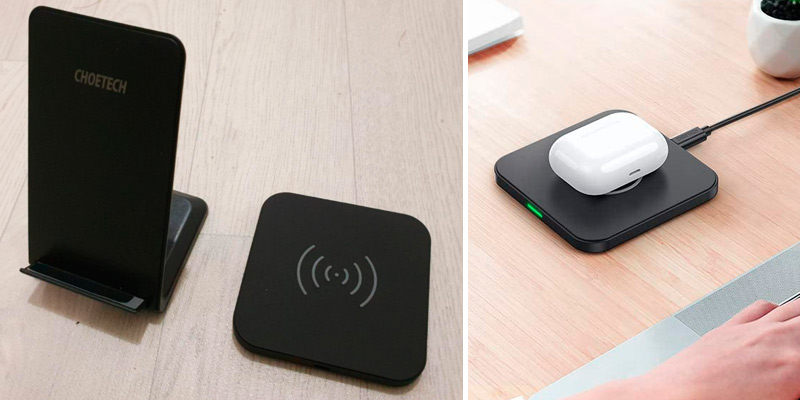
The Usual Package
The biggest difference between the two chargers is that the pad lags a little behind the stand where the charging speed is concerned. Having said that, the pad can recharge AirPods cases (again, AirPods 2 and AirPods Pro only as the original 'pods do not support wireless charging), whereas the stand will not let you do that, so you lose some, you gain some. What you also gain is the usual protection mechanisms, including overvoltage, overcurrent, short-circuit, and overheating protection.
What's more, both chargers can detect foreign objects, preventing you from accidentally damaging them or the incompatible device that you might put on them. Of course, both devices also support standard 5-watt wireless charging, Apple's 7.5-watt fast charging, and Samsung's 10-watt fast charging.
Bottom line, people who own multiple Qi-enabled devices will be pretty happy with the CHOETECH JPP-68.
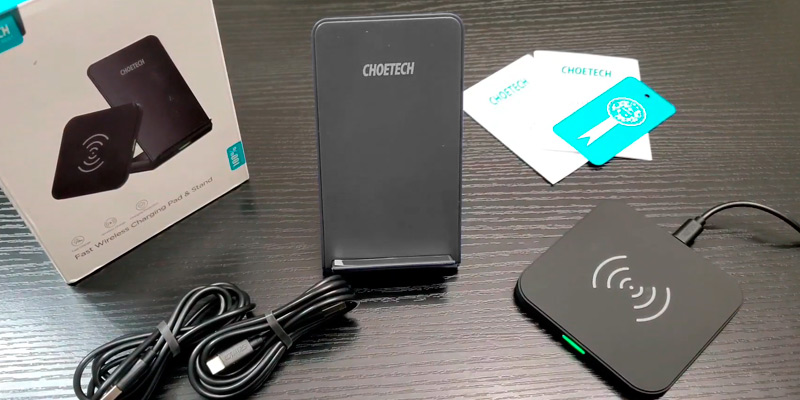
Additional Info
| Last updated price | £18.69 |
| Stock | May be out of stock |
| ASIN | B083W32TSF |

LETSCOM Super P
Just 50 Grammes
The LETSCOM Super P is pretty super, we will not lie. The model may not necessarily look the part but there's some serious tech inside this small circular charging accessory. Also, the small part is not misleading, even when compared against the most compact wireless chargers. At 100 x 100 x 8.6 millimetres, this model will have no problems fitting cluttered workspaces or bedside tables that are already housing multiple accessories. Generally speaking, with these chargers, weight matters very little since they're all fairly lightweight anyway but, with this one, we'll make an exception since 50 grammes is just brilliant. Of course, the difference between this 50-gramme model and average wireless chargers weighing ~100 grammes is not huge but it is noticeable, especially when you're carrying this charging accessory with you beside an already full bag.
Examining its design, this charger follows the industry playbook, drawing a black circle that's practically indistinguishable from most models. The company's noticeable logo could use more discreetment, so to speak, and the matte, almost abrasive finish looks a little weathered, maybe even crude, but, again, these differences are practically unnoticeable. Plus, the same finish is less susceptible to scratches than more glossy, polished finishes, so that's always a plus. What's also a plus is the built-in LED indicator light. Staying red, the light indicates that the charger is connected to the power source. Alternating between red and blue with frequent flashes, the light delivers an overcurrent alert. The indicator follows the same pattern where's s foreign object detected. When the model's charging the gadget on it and everything's fine, the light remains blue.
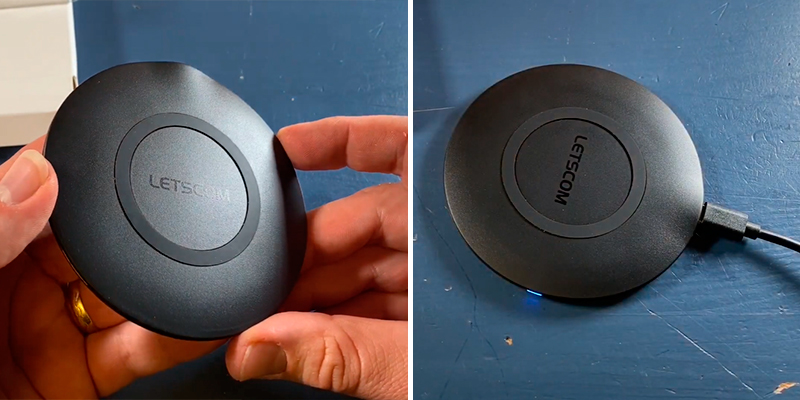
Dishing out 15 Watts
Though we started lauding the model's tech, we haven't even touched upon it yet. First off, apart from the above-mentioned overcurrent protection, the charger comes armed with overvoltage, short-circuit, and overheating protection switches. Second, whilst there's no shortage of wireless chargers that can charge Qi-compatible devices outputting 5 watts, giving iPhones 7.5 watts, and Samsung gadgets dishing out 10 watts, this one can also fast-charge LG phones, feeding them a continuous 15-watt supply.
Long story short, people with a decent high-tech gadget collection will appreciate the LETSCOM Super P but not quite as much as those people whose collection also includes an LG smartphone.
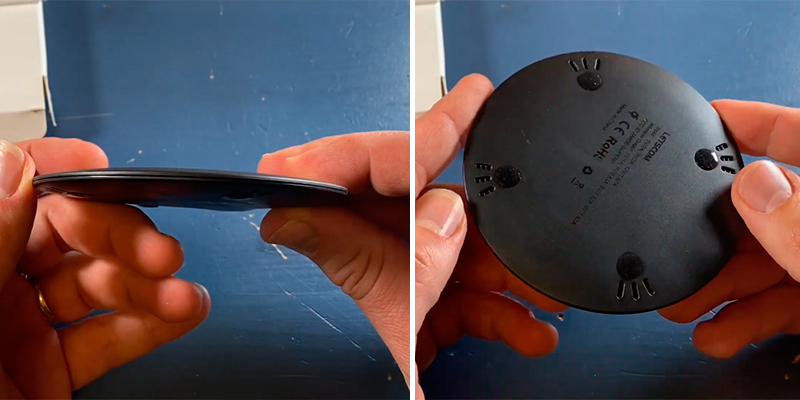
Additional Info
| Last updated price | £13.99 |
| Stock | May be out of stock |
| ASIN | B0886C4C3J |

NANAMI 10W
A Little More Attractive
The NANAMI Wireless Charger pretty much clones the standard form factor that these chargers are usually sporting, but not without putting its own slight twist on it. From where we're standing, the biggest 'twist' is the LED circumference surrounding the pad. First, the light adds appearance points, making the model's profile a bit less bland than it would have been otherwise. Second, the light tells you whether the gadget on the pad is charging or not. Of course, most wireless chargers come with integrated LED indicators but they're seldom as elegant as the one this model uses, so we'll give the people at NANAMI credit where credit is due.
Where credit is not due, however, is with the charger's heat dissipation. In short, it is practically nonexistent. Because that's the case, the pad can get pretty hot when you go with the Fast Charge mode. Regardless, even when it gets hot, you can leave the phone charging without worrying about a thing as the overheating protection that this model incorporates will prevent the pad from cooking out or damaging the gadget on it.
Now that we've mentioned protection means, this wireless charger also employs overvoltage, overcurrent, and short-circuit protection switches. Thanks to these, you can leave home knowing that both devices will be fine when you arrive. Likewise, borrowing from its competitors' playbook, the model features foreign object detection. When you put a metal or magnetic item on the pad (keys, coins, credit cards, etc), the model will stop working and alert you about it, preventing the pad from melting.
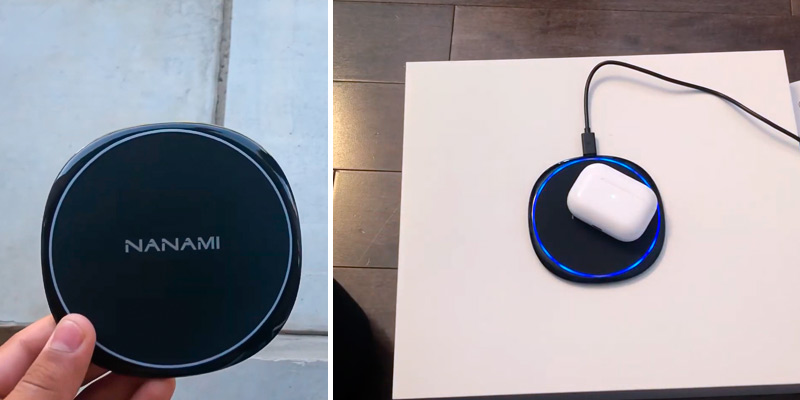
USB Type-C
At 99 x 99 x 7.6 millimetres, this wireless charging pad from NANAMI measures about the same that 9/10 wireless chargers are measuring nowadays. The same can be said about the 50 grammes that this device reaches on weight scales. To some extent, the same sentiment can be extended towards the non-slip treatment that the pad has received, making sure that the phone does not slip or slide during charging. Following the latest trend, the model adopts a USB Type-C interface, which is great since that means you can always insert the plug on the first try.
In closing, we do not have any major issues with NANAMI Wireless Charger. On the contrary, the model boasts a feature or two that put it ahead of the competition. And, just like the same competition, the pad works with Qi-compatible devices as well as with the Fast Charge mode on most Samsung and Apple devices.
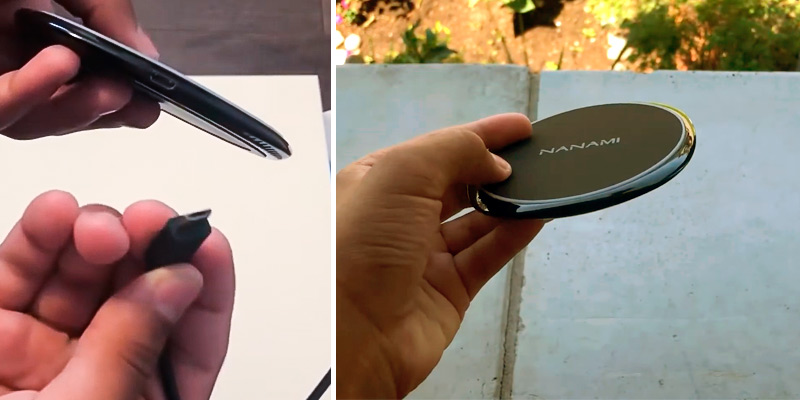
| Last updated price | £13.99 |
| Stock | May be out of stock |
| ASIN | B07KXCBR3Y |
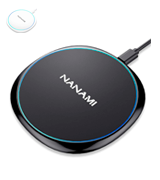
What Is a Wireless Charger?
High technology is developing really fast. Wireless chargers that used to be strange and unusual devices from faraway future only a couple years ago are no longer considered to be a part of science fiction.
A wireless charger is a device designed for charging smartphones, tablets and other modern gadgets without wires. To comply with such chargers, a charged device should have a special built-in Qi sensor. In order to start the process of charging, you just need to put the charged device in the cradle. That's all! So, wireless chargers give you a chance to get rid of bothering wires and protect your phone charging port from damage.
If you travel a lot, you should consider buying power banks and solar chargers by means of which your gadgets will stay charged when you need them.
What Features to Compare
Compatibility and Qi Wireless Interface Standard
The first thing you should pay attention to is the compatibility of your gadget with Qi wireless interface standard. This standard was designed specifically for wireless charging where the battery-charging station is used for creating a magnetic field which afterward induces an electric current in the battery of the device. Nowadays many manufacturers embed this technology into their high-end gadgets as it allows people to free themselves from wires. If you have an outdated smartphone, you need to buy a special chip (receiver) which should be connected to the smartphone. Alternatively, you can buy a special case with Qi-module. Note that wireless charging takes a bit longer than a usual one.
Design
There is a variety of different wireless chargers and each of them has its own unique design. They can be designed in the shape of stands which can be easily placed on your desk. Some models have a stone or button design. It's obvious that dimensions of a wireless charger are crucial since you are likely to take it with you on trips. Note that some models don't require plugging into a wall outlet and can be placed in your pocket or a small bag.
Special Features
Pay attention to special features of wireless chargers you can benefit from. Some charges, for example, have additional USB-ports allowing you to charge more than one gadget at once. Others work using their own battery and have pre-installed 30-min operation cycle following which the device can shut off automatically. It can be very useful if the gadget has been already charged and there is no necessity to charge it anymore. One more advantage is that apart from smartphones, charging pads can work with smartwatches as well. The last but not the least, the majority of wireless chargers include LED-indicators that show the current status of charging and smart temperature control function to prevent your device from overheating.
Did you know?
The Technology is Older Than You Might Think
Without trying to make any sort of an informed guess, it would be fair to presume that most people associate the wireless charging possibility with some of the latest advancements in the world of information technology. And although that makes quite a lot of sense, that kind of assumption couldn't be more misguided. As surprising as it may sound, the technology required for wireless charging has actually been around for the past 200 years. In 1820, utilising an electric current paired with a magnetic compass, Danish physicist Hans Christian Oersted was the very first person to discover that electric currents can create a magnetic field. Of course, speaking of the inventions that helped us get where we are today in terms of wireless charging, we would be unwise not to mention Michael Faraday, an English scientist that, among other things, managed to make a name for himself in the world of science by discovering electromagnetic inductive wireless charging a decade later in 1831. Without going into too much detail, Faraday was able to find out how to transfer energy between two objects, which is, as you might deduce, the very basis of wireless charging.
The Two Types of Wireless Charging Technologies
Generally speaking, the majority of wireless chargers fall under a couple available categories in terms of charging technologies. There are those that transfer energy from the closest near field sources and those that are able to perform their main function by transferring energy from distant sources. The majority of wireless chargers out there use inductive and magnetic charging, meaning that they employ the first method that transfers energy using the closest near-field sources. However, more and more devices these days are starting to put into use a wireless power technology that is based on radio frequency energy, which, similar to solar, heat, and pressure charging, utilises some of the more distant sources in order to transmit energy.
Wireless Charging Technologies Are Much More Environmentally Friendly
That probably shouldn't come as a surprise if you know a thing or two about the distribution of energy and the sort of damage all of the orthodox solutions are capable of doing to our environment, so, suffice it to say, wireless solutions are actually capable of creating a considerably more sustainable environment. They will be able to do that by reducing CO2 emissions by thousands of tons annually when applied on cars and public transportation vehicles, and by minimising the battery waste produced by the constant replacement of disposable batteries.
You Might Be Using A Wireless Charging Technology Without Even Knowing It
FAQ:
Q: What are some of the advantages of the wireless charging technology?
A: The biggest advantage a wireless charger has over a regular one with a cord and a cable would certainly have to be the convenience aspect of the whole thing. Just think about it - you can sit down for a drink or a light snack and simply put your smartphone on the charger (with some of the models utilising a much wider charging area, you don't even have to align your phone with the charger perfectly). As simple as that. The majority of wireless chargers also tend to be lighter and much more compact than the regular ones, so you can easily take them with you wherever you go without having to worry about what percentage is your smartphone's battery at, and whether you will be able to finish every task that you planned before your phone shuts down. On top of that, the inductive charging automatically stops when the device is fully charged, which is a feature that isn’t at all available to the absolute majority of regular chargers.
Q: Is wireless charging slower or faster compared to the regular approach?
A: At the very inception of this technology being implemented in commercial use, the majority of wireless chargers would tend to lose to their wired counterparts in terms of speed. But, nowadays, most wireless charging solutions are capable of entirely replenishing the battery of your smartphone at virtually the same speed or, sometimes, even considerably faster than their cabled rivals. The secret to it lies in the fact that the latest Qi-certified wireless chargers are capable of delivering higher power levels (up to 15W) to compatible receivers, which, in turn, results in significantly faster charging times. On top of that, if your phone and your charger both support fast charge mode, the kind of swiftness they are able to reach in terms of recharging the battery is simply unparalleled when it comes to cable chargers.
Q: Can I charge multiple devices at the same time on one wireless charger?
A: It all depends on the kind of model you are looking at. Some are capable of charging up to two and even three phones simultaneously, while some can only charge one phone at a time, so make sure to check if the option is there before purchasing your wireless charger.
Q: My phone tends to feel a bit warm every time I charge it using a wireless charger. Is it normal?
A: Yes, there's likely absolutely nothing to be concerned about since it is absolutely normal for your phone to feel slightly warm right after the charging process is concluded. Furthermore, some wireless chargers even feature temperature control and advanced safety options that will always prevent your phone from receiving any kind of damage throughout the entire charging process.
Q: If my device is able to charge wirelessly, can I still use a regular cable charger instead?
A: Yes, you can still use a cable to charge any device that's compatible with wireless charging.
Sources:
1. Rob Triggs Wireless charging technology, Android Authority. January 11, 2016.
2. Russell Holly Qi or Powermat, Androidcentral. June 9, 2015.
3. Wireless Charging, Consumer Reports. December 11, 2013.
4. Elmer Montejo How you can get wireless charging, Techlicious. July 31, 2016.
5. Marie Brewis How to use Qi wireless charging - how to wirelessly charge your phone, TechAdvisor. March 31, 2016.
6. Sara K. White Inside the evolving world of wireless charging technology, CIO. July 24, 2015.
7. Wireless charging, ComputerWeekly.com. May 2013.
Popular Comparisons
































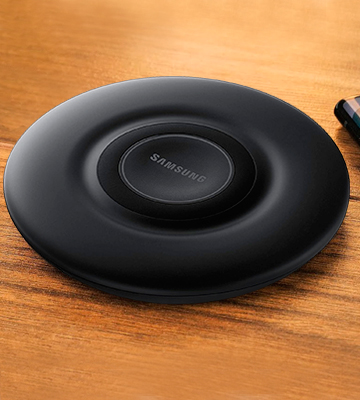


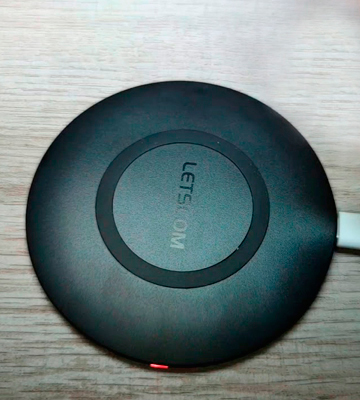

Your comment was successfully sent
Error! Please try again later